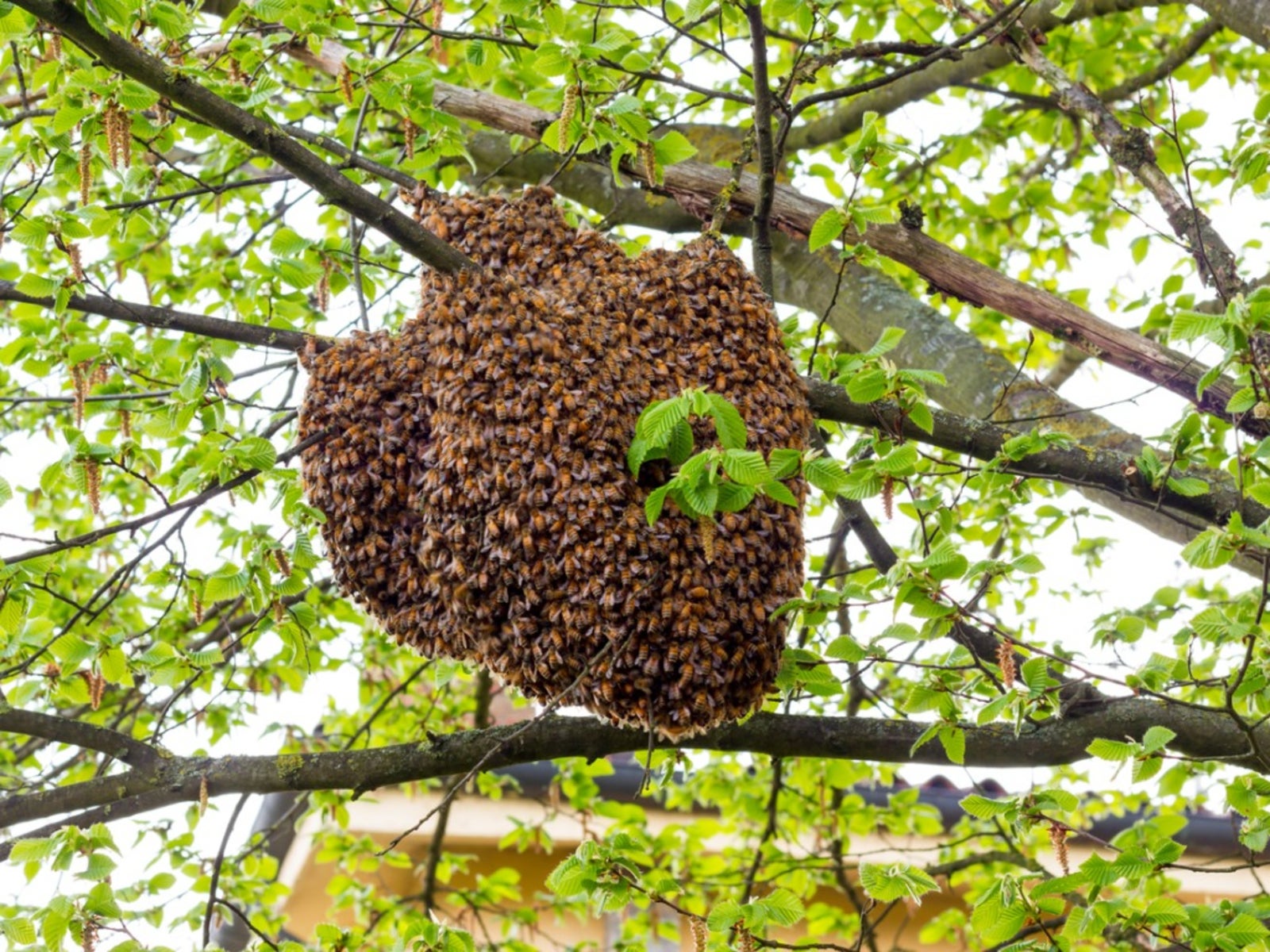Honeybee Swarms: How To Control A Honeybee Swarm In Garden


When gardens are in full bloom, we get emails and letters that say, “I have a honeybee swarm, help!” Bees are a vital part of fruit and vegetable production and their pollinating activities help keep flowers blooming and fruiting throughout the season. A honeybee colony may contain 20,000 to 60,000 individuals. Most of these go about their work separately, but rarely, a honeybee swarm in garden settings may occur. Therefore, it is vital to know the steps to take on how to control a honeybee swarm, as their stings can be harmful and even fatal to some people.
About Honeybee Swarms
Warm spring and summer temperatures and the lure of sweet nectar bring the active bees out to gather food. Bee colonies form over time and honeybee swarm nesting may be in a tree, under your eaves or even your attic. This close proximity to a large number of stinging insects can pose a problem. Honeybee swarms en masse pose a real threat to children, pets and even adults, especially those with severe allergic reactions to stings. Honeybee swarms happen because once the colony gets too large, a queen will leave the current nest and take thousands of worker bees with her to form a new colony. These honeybee swarms can occur at any point in late spring or summer.
Honeybee Swarm Nesting
Swarms are a temporary occurrence, however. The queen flies until she gets tired and then rests on a tree or other structure. All the workers follow her and cluster around their queen. Usually, scout bees will fly out in a radius to find a likely nesting site. Once they find suitable lodging, the swarm will leave. This is usually in less than two days and sometimes in just a few hours. If you happen to come across a honeybee swarm in garden sites or other area near the home, stay away from the swarm. While honeybees are not normally aggressive, they may sting when swarming. You can make it easier on the bees, however, by providing honeybee swarm nesting material, such as a bee box. Dealing with a honeybee swarm in your home can be prevented by plugging up access points and holes in the siding and attic entries as well.
How to Control a Honeybee Swarm
Honeybee swarms are not threatening unless they are near the home, around play areas or in the garden of an allergic person. Honeybee swarms in garden areas that are frequented by someone with severe allergies need to be dealt with. You can contact a beekeeper or animal control for help with moving the insects. Many beekeepers are happy to take a swarm off your hands and give them a home in their apiaries. Due to the severe honeybee decline, this is much better than using a pesticide. Honeybee populations are in crisis, and it's important to preserve the insects if possible. Only as a last resort, all else fails and you are desperate to remove the bees, you can use a non-toxic soap spray. Any bleach-free dish soap mixed with water at a rate of 1 cup (237 mL.) of detergent to 1 gallon (3.8 L.) of water is beneficial in dealing with a honeybee swarm. Use a pump sprayer and soak the outside of the swarm. The bees will gradually fall off, so you can wet the next layer of bees. Put a tarp or garbage can under the swarm to catch the bees. However, the easiest way of dealing with a honeybee swarm is to simply leave the insects alone. They are only around for a short while and will give you an interesting opportunity to observe these useful and social insects.
Gardening tips, videos, info and more delivered right to your inbox!
Sign up for the Gardening Know How newsletter today and receive a free copy of our e-book "How to Grow Delicious Tomatoes".

Bonnie Grant is a professional landscaper with a Certification in Urban Gardening. She has been gardening and writing for 15 years. A former professional chef, she has a passion for edible landscaping.